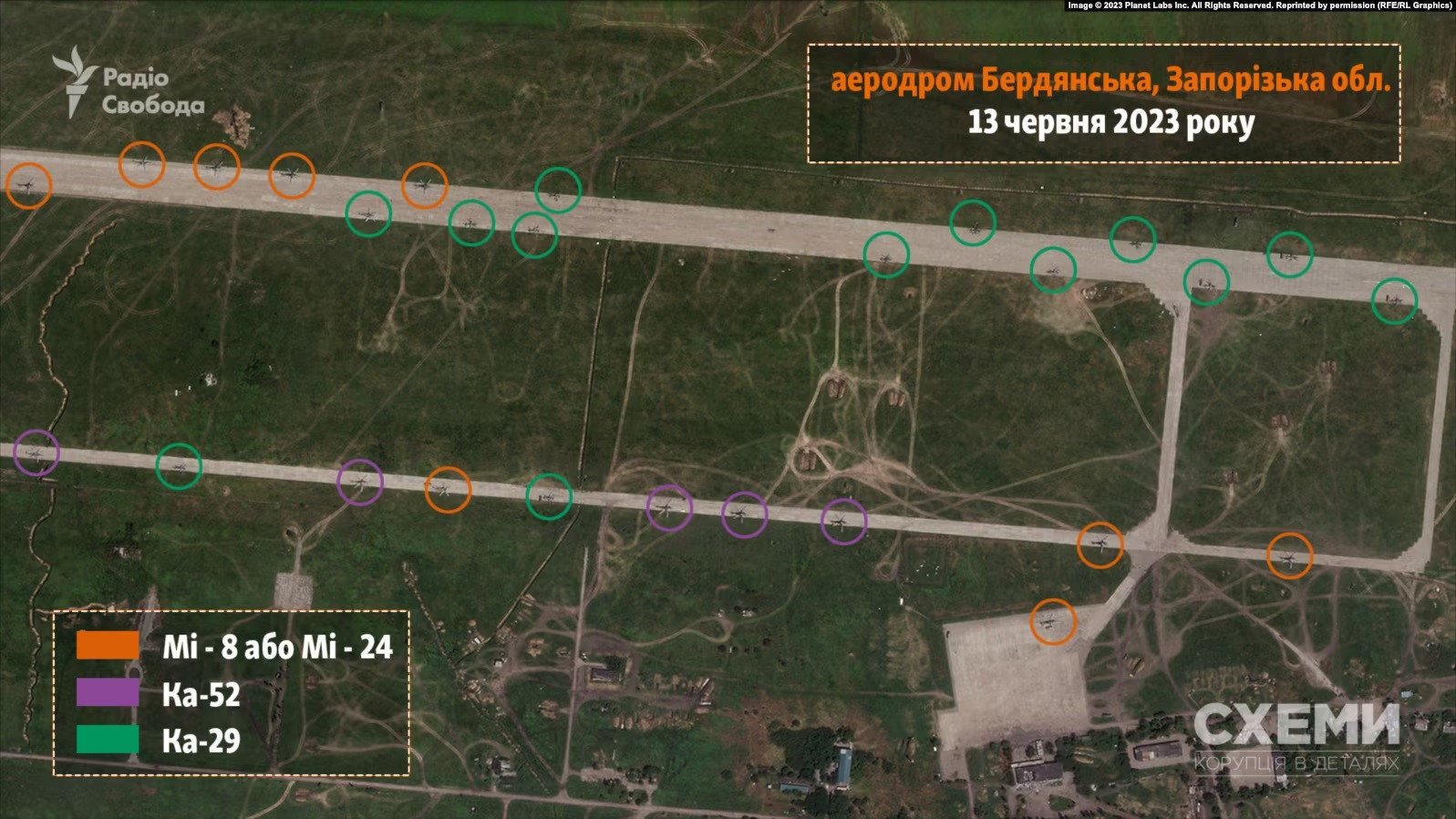Russia has reportedly secured a “temporary advantage” in southern Ukraine, mainly by deploying attack helicopters armed with longer-range missiles, enhancing their effectiveness against ground targets.
France To Challenge US F-35 Fighters’ Dominance With Stealthier & Hypersonic Missile-Enabled ‘Super Rafale’
According to the latest update from the UK Defense Ministry on June 17, Russia has significantly strengthened its attack helicopter capabilities since the commencement of Ukrainian counteroffensive operations in southern Ukraine.
Furthermore, the ministry’s report said satellite images had provided evidence of more than 20 additional Russian helicopters being stationed at Berdiansk Airport, approximately 100 kilometers behind the front lines in southern Ukraine.
“In the constant contest between aviation measures and counter-measures, Russia has likely gained a temporary advantage in southern Ukraine, especially with attack helicopters employing longer-range missiles against ground targets,” the UK Ministry of Defense said.
Radio Liberty’s Schemes project initially made public satellite images referenced by the UK Ministry of Defense (MoD). These images were obtained from Planet Labs.
Latest Defence Intelligence update on the situation in Ukraine – 17 June 2023.
Find out more about Defence Intelligence's use of language: https://t.co/tcEIjHdhNp
🇺🇦 #StandWithUkraine 🇺🇦 pic.twitter.com/7thvlrT5UM
— Ministry of Defence 🇬🇧 (@DefenceHQ) June 17, 2023
Images published on June 13 shows that Russia deployed 20 new helicopters to the Berdyansk airfield between May 31 and June 13, coinciding with the start of Ukrainian counteroffensive operations in southern Ukraine.
The imagery reveals a total of 27 helicopters belonging to Russian forces stationed at the airfield. This includes a fleet of five Ka-52 helicopters, nine Mi-8 or Mi-24 helicopters, and thirteen Ka-29 helicopters.
In a comment provided to Schemes, aviation expert Anatoliy Khrapchynskyi explained that the majority of the helicopters observed at Berdiansk Airport are utilized to provide support to Russian ground forces and bolster their defense against the Ukrainian counteroffensive.
He highlighted that Mi-8 helicopters could perform various tasks, including evacuation operations and rapidly deploying troops or equipment near the battlefield.
Some experts suggest that the Berdiansk airfield is likely being utilized by Russian troops as an operational base for deploying army aviation units from the occupied Crimea region.

Russia’s Ka-52 Alligator
In response to Ukraine’s initiation of counteroffensive operations, numerous sources have reported in-depth information about Russian aviation operating near the front lines.
The deployment of attack helicopters especially presents a significant and heightened threat to the ongoing Ukrainian counteroffensive, particularly in areas where the movement of armored advances is taking place.
Kamov Ka-52 Alligator, an attack helicopter, has been consistently highlighted as part of the Russian aviation forces operating close to the front lines.
The Ka-52 has been extensively employed in rotary-wing close air support missions throughout the war, evident in its significantly higher number of losses compared to other helicopter models.
Open-source analysis website Orxy suggests that a total of 35 Ka-52 helicopters have been destroyed, abandoned, or captured since the beginning of the conflict, highlighting the substantial impact it has had and the risks associated with its operational deployment.
As previously highlighted by the EurAsian Times, the Kamov Ka-52 Alligator has established itself as Russia’s “top tank killer,” demonstrating effectiveness in neutralizing enemy tanks on the battlefield.
The Ka-52 is not the only Russian attack helicopter participating in the campaign. Other helicopters, such as the Mi-24 Hind and the Mi-28N, and Mi-28NM Havoc, are also seen in action.
A noticeable increase in rotary-wing assets suggests a growing deployment to bolster efforts to impede the Ukrainian counteroffensive.
As previously mentioned, recent satellite imagery has revealed the arrival of 20 additional helicopters at the Russian-occupied Berdiansk Airport in southeastern Ukraine. These helicopters have been relocated from other areas to provide support in the ongoing conflict.
While there have been embarrassing incidents, such as a Ka-52 mistakenly engaging an agricultural crop-spraying vehicle, the current situation on the battlefield has created an opportunity that the Ka-52, specifically, is well-suited to take advantage of.
Furthermore, the absence of Ukrainian forward-deployed mobile SHORAD systems has created a “dead zone” where the Ka-52 can operate with greater safety.
This zone is at the outer edge of their engagement range, particularly at night, providing enough distance to engage armored targets effectively while avoiding SHORAD systems.
Operating at low altitudes, utilizing the terrain, and operating primarily at night, helps reduce vulnerability to SHORAD and MANPADS threats.
- Contact the author at ashishmichel(at)gmail.com
- Follow EurAsian Times on Google News